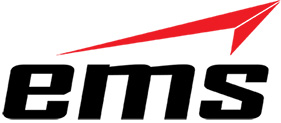 Last week, we introduced you to 3D scanning technology and all of its many uses. This week, we’re going to focus on how it actually works with technical specifications sure to appease even the most detail oriented among us.
Last week, we introduced you to 3D scanning technology and all of its many uses. This week, we’re going to focus on how it actually works with technical specifications sure to appease even the most detail oriented among us.
These scanners work in a variety of different ways but there are some aspects that are applicable across all different types. If short-range scanning is your goal, then you are likely talking about laser triangulation or structured light scanners. Laser triangulation involves the use of a laser line or point that runs across an object at close range. A sensor calculates the amount of light reflected off the object in order to draw a dot map of it on a computer. The other type of short range 3D scanning is structured light. It uses white or blue light to project patterns onto an object. The edges of each line is measured and the distance between the scanner and object is recorded to create a three-dimensional image.
If long range scanning is of more interest to you, then you’ll want to know about pulse-based and phase-shift laser scanners. Laser pulse-based scanners measure how long it takes for a laser to reach and object and reflect back. Once sensors pick up how far away an object is, it can scan the entirety of an object from a distance. They often use mirrors to achieve this. There is also laser phase-shift scanners, which are very similar to pulse-based scanners but they add in power modulation into the mix. This 3D scanning equipment measures how long it takes for the laser beam to reflect back to the scanner and the phase-shift tech makes for more accurate results. It’s also the speedier option.
When you take all of the technical details involved in 3D scanning, you’re bound to be impressed. Anyone keeping up with the latest innovations in this area will notice that its use is increasing with each passing day. When paired with 3D printing, this scanning tech is taken to new heights. Not only can objects, spaces, and buildings be captured and reproduced on the computer; they can also be recreated and fabricated, right there on the spot. The potential for this is limitless.
As always, we’ll keep an eye on the latest news and innovations in this field and keep you posted!

